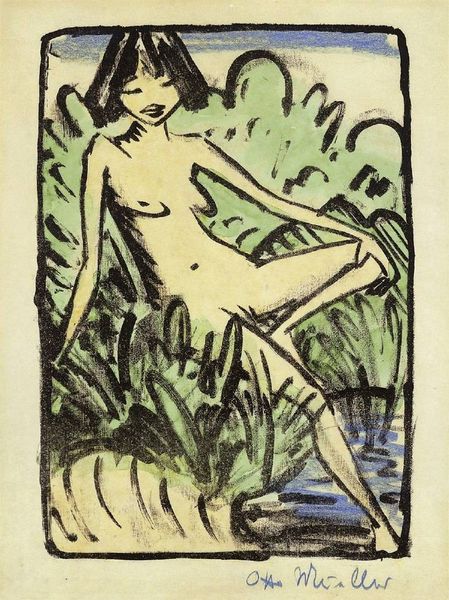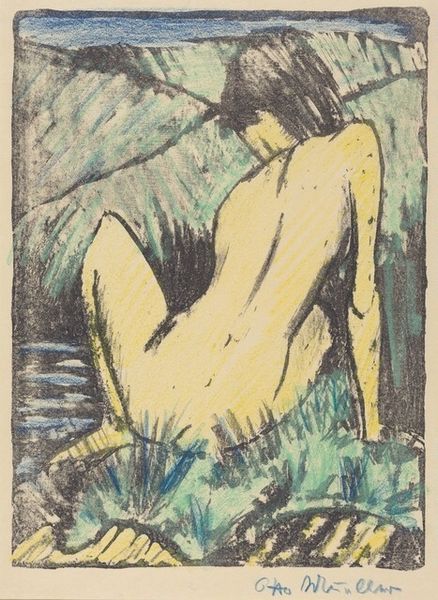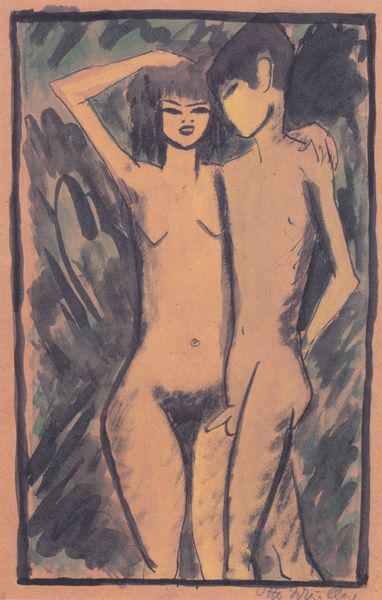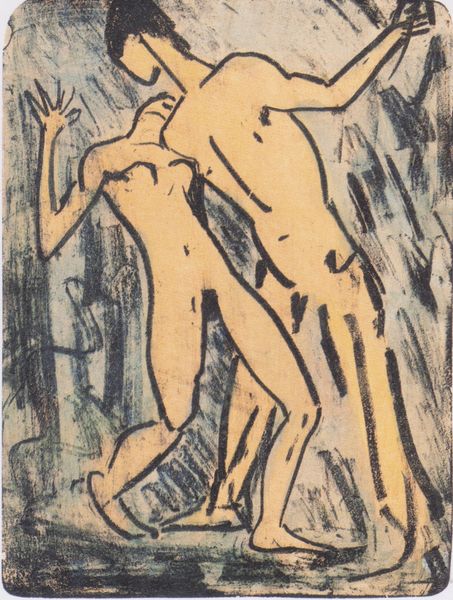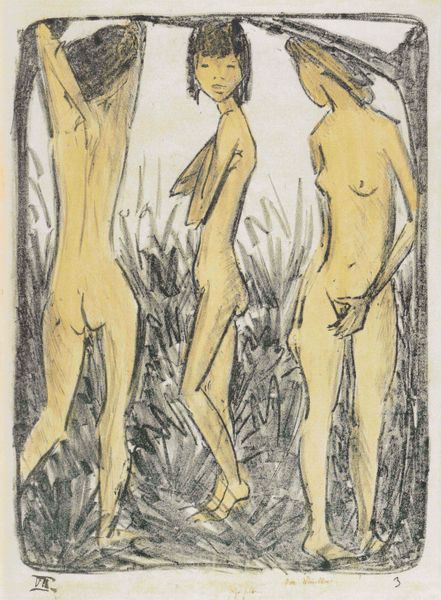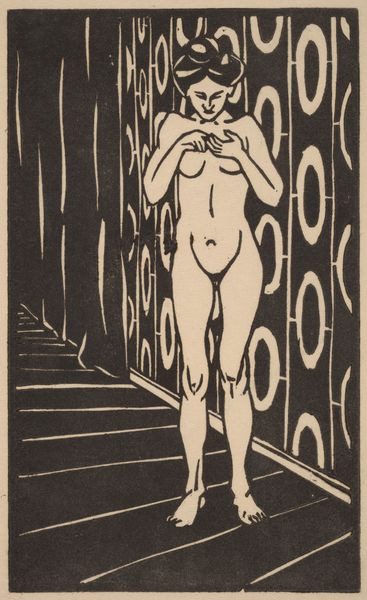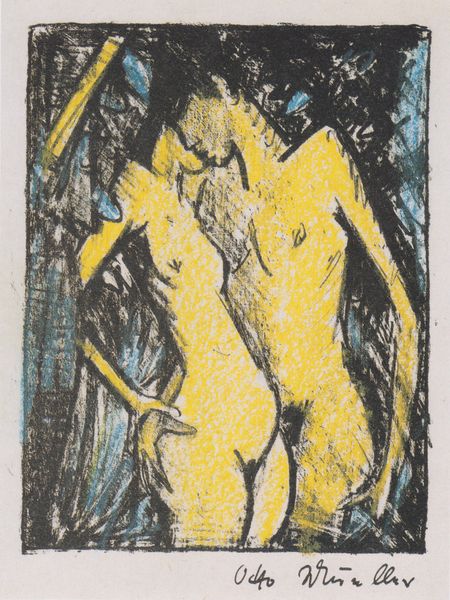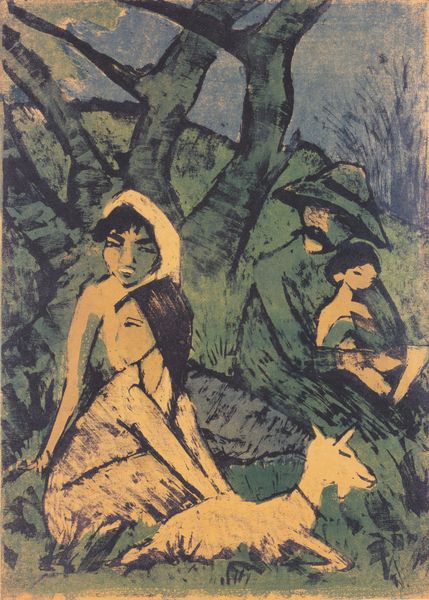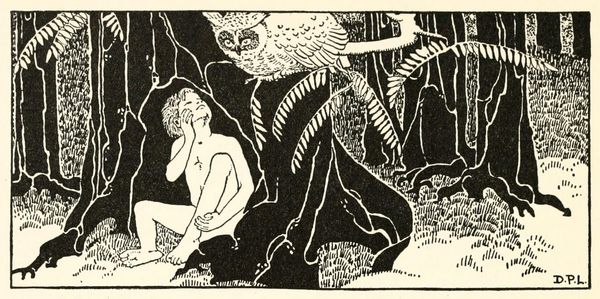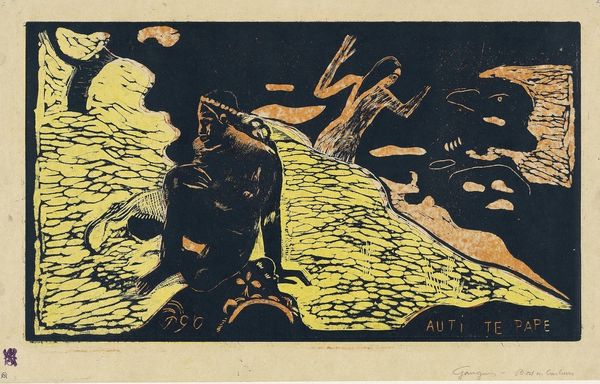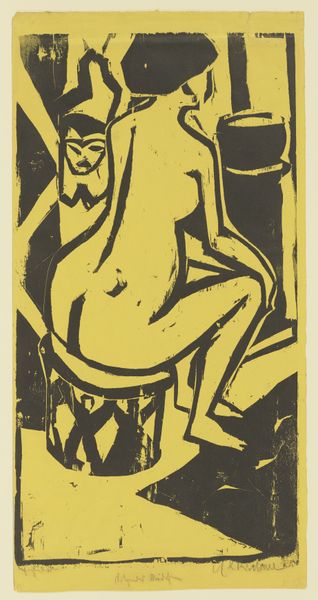
drawing, print, woodcut
#
drawing
#
ink painting
# print
#
landscape
#
german-expressionism
#
figuration
#
expressionism
#
woodcut
#
watercolour illustration
#
history-painting
#
nude
Dimensions: 26.2 x 37 cm
Copyright: Public domain
Curator: The piece before us, Otto Mueller’s "Am Ufer Sitzendes Mädchen," or "Girl Sitting on the Shore," dates from 1926 and is rendered as a woodcut. Editor: Immediately, I’m struck by its earthy tones and the almost unsettling flatness of the figure against the natural background. It’s strangely serene and a little haunting at once. Curator: As part of the German Expressionist movement, Mueller, along with artists like Heckel and Kirchner, explored themes of alienation and urban life but often juxtaposed these with a longing for nature. This particular work really exemplifies that push and pull. Editor: Exactly. Look at the way the simplified, almost geometrical rendering of the body contrasts with the organic shapes of the surrounding landscape. It’s as if the figure is both part of, and alienated from, the environment. There's a commentary here on the objectification of the female form and a deeper engagement with existential angst. Curator: The medium itself, woodcut, also plays a role. Its inherent roughness, the stark contrasts created by carving into wood, echo the emotional intensity sought by the Expressionists. They purposefully moved away from smooth, academic styles to something more visceral. This roughness has often been linked to a "primitive" aesthetic, embodying pre-modern longings. Editor: I see that “primitive” aspect not so much as a regression but as a means to disrupt the sanitized view of society. It feels like a raw expression of human vulnerability and a reclamation of the female nude as a figure with agency. She seems very deliberate. Curator: Deliberate, perhaps, within the context of a larger cultural critique. German Expressionism used imagery like this to question societal norms, particularly around sexuality and industrialization, in the interwar years. Editor: The piece reminds me how even within a specific art historical movement, an artwork can speak volumes about shifting perspectives on identity, gender, and our relationship with nature. It pushes us to really question established values. Curator: Indeed. Looking back, we can appreciate Mueller's exploration not just as an aesthetic statement, but as a social commentary etched in wood and ink. Editor: It certainly gives us a richer understanding of the complex socio-political undercurrents during that pivotal moment in history.
Comments
No comments
Be the first to comment and join the conversation on the ultimate creative platform.
